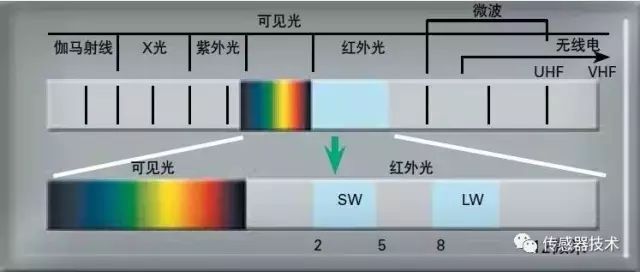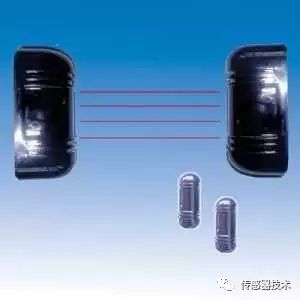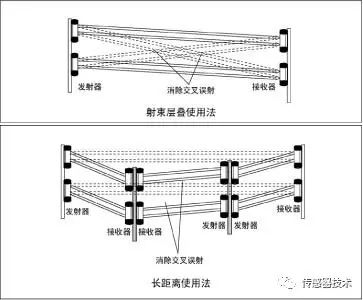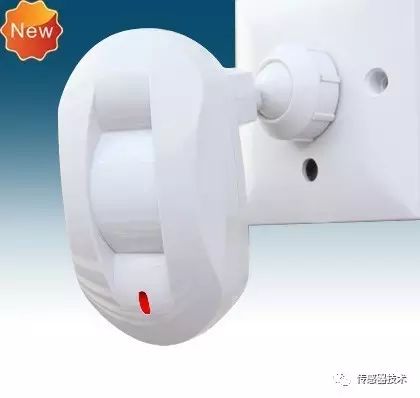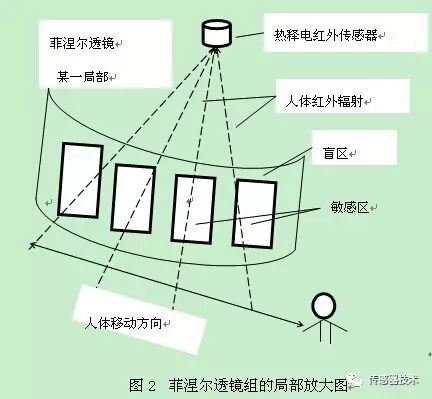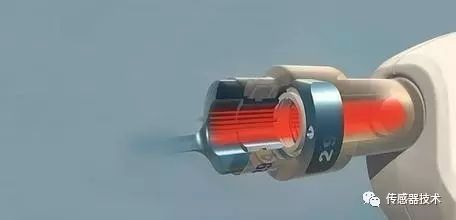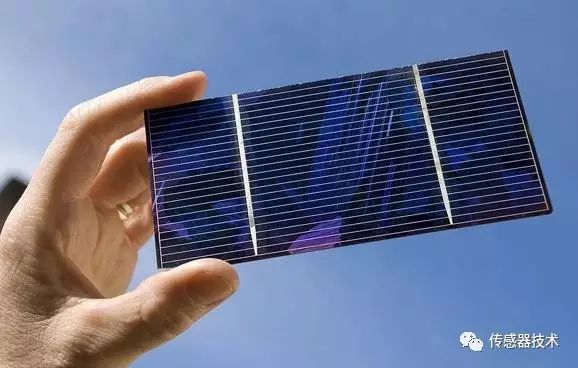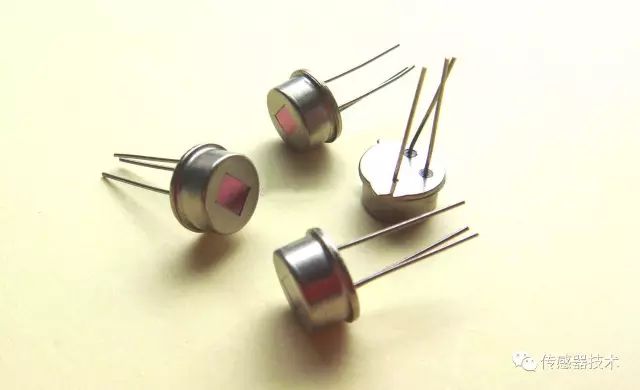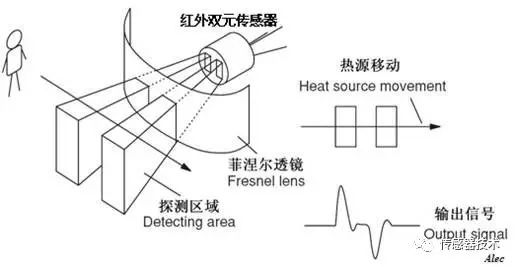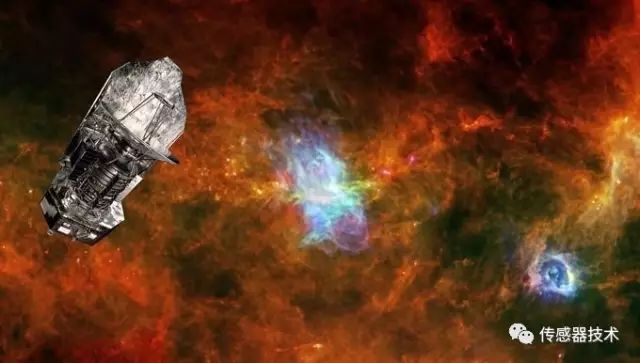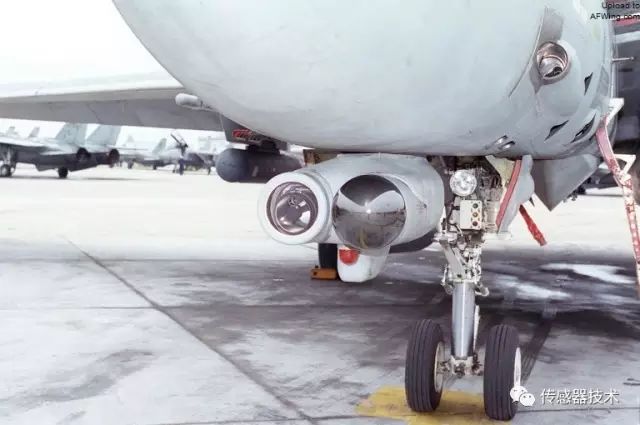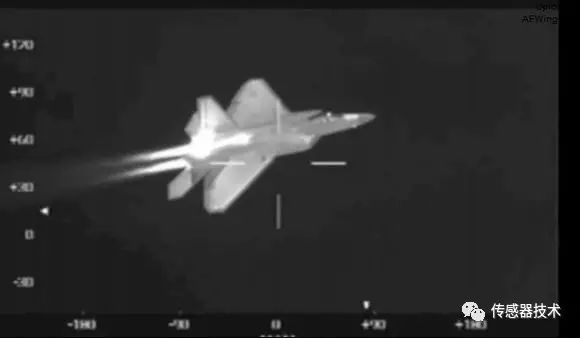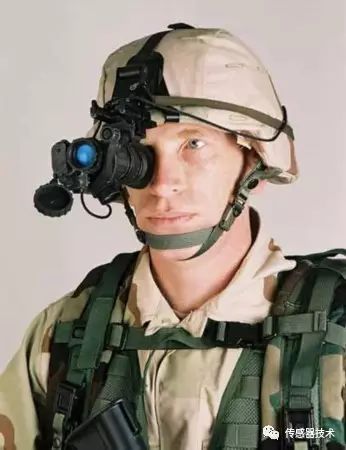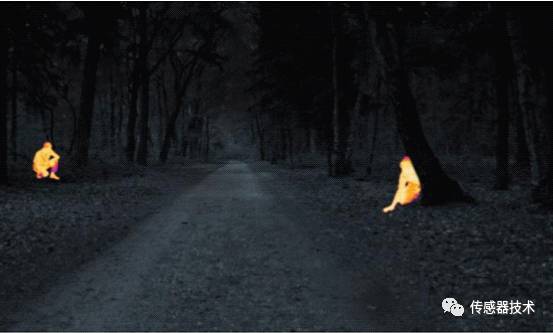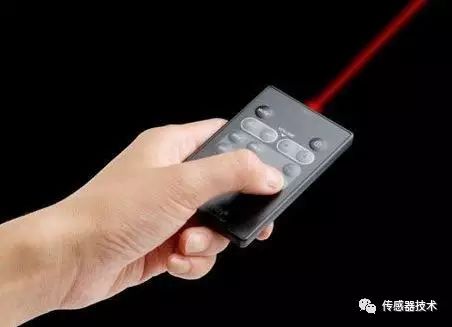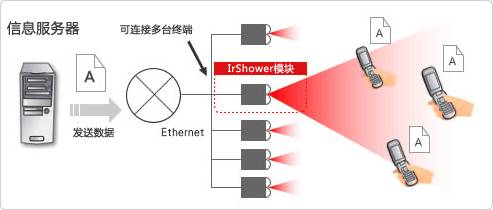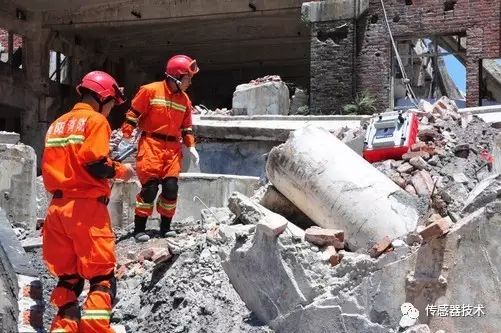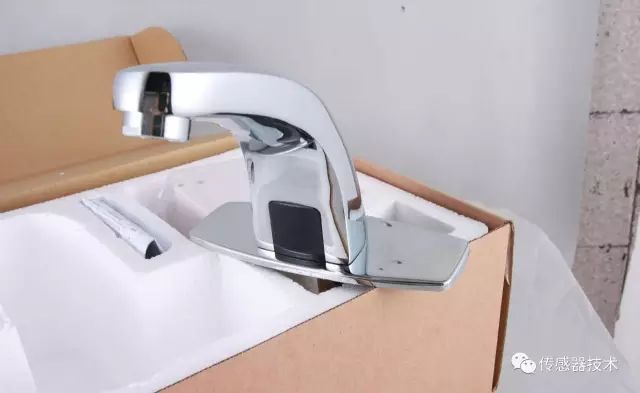Let's look at a message two years ago: “It is learned that this past fall, Stephen Hawking, a famous physicist with more than half a century of cryopreservation, will publish a memoir, revealing honesty over 71 years of life. It is the first book that Hawking did not rely on for help from others and relied on his own.However, has Hawking been talking and giving speeches to others? It turns out that the computers installed below and behind Hawking's wheelchairs contain an audio amplifier and a vocal synthesizer that are controlled by infrared sensors on Hawking's spectacles to respond to changes in light caused by facial movements...†From the above we can see that today, infrared sensor technology has been very mature, has been integrated into people's daily lives, and plays a huge role. Before we understand infrared sensors, we should first understand what is infrared or infrared light. We know that light is also a kind of radiated electromagnetic wave. In human experience, it usually refers to the visible light wave range from 400nm (violet light) to 700nm (red light) that can be felt by human eyes. As shown in the figure, we radiate between red light and wavelengths from 760nm to 1mm as infrared light. The infrared light is invisible to the naked eye, but we can still feel it through some special optical devices. Infrared light is a light that is invisible to the human eye, so it has all the characteristics of all light rays of light. But at the same time, infrared still has a very significant thermal effect. All materials above absolute zero, -273°C, can produce infrared light. Therefore, simply speaking, an infrared sensor is a type of sensor that uses infrared light as a medium for data processing. Type of infrared sensor Infrared light is a light that is invisible to the human eye, so it has all the characteristics of all light rays of light. But at the same time, infrared still has a very significant thermal effect. All materials above absolute zero, -273°C, can produce infrared light. According to the different ways of issuing, infrared sensors can be divided into active and passive two. Active infrared sensor working principle and characteristics The transmitter of the active infrared sensor emits a modulated infrared beam that is received by the infrared receiver to form a warning line composed of an infrared beam. When you encounter leaves, rain, small animals, snow, dust, and fog, you should not report an alarm. An alarm will occur if a person or a considerable volume of objects is obstructed. The active infrared detector technology mainly adopts one shot and one receive, which is line type prevention. Now it has been developed from the initial beam to multiple beams, and it can also double-fire, minimizing the false alarm rate, thereby enhancing the stability of the product. Sex, reliability. Since infrared is a detection medium with good environmental factors (non-coherent sound, lightning, vibration, various types of artificial light sources, and electromagnetic interference sources in the environment), it is also a good product with good target factors ( Only when the target of the infrared beam is blocked, the alarm will be triggered, so the active infrared sensor will be further promoted and applied. The working principle and characteristics of passive infrared sensor Passive infrared sensors work by detecting infrared radiation emitted by the human body. The sensor collects infrared radiation from outside and collects it on the infrared sensor. Infrared sensors usually use pyroelectric elements, which release charge when they receive a change in the infrared radiation temperature, and generate an alarm after detection processing. This sensor is aimed at detecting human radiation. Therefore, the radiation sensitive element must be very sensitive to infrared radiation having a wavelength of about 10 μm. In order to be sensitive to human body's infrared radiation, a special filter is usually covered on its radiation surface, so that the environmental interference is obviously controlled. The passive infrared sensor contains two pyroelectric elements connected in series or in parallel with each other. In addition, the two polarization directions produced are exactly the opposite. The ambient background radiation has almost the same effect on the two pyroelectric elements, causing them to cancel each other's charge generation effect. Thus, the detector has no signal output. Once the intruder enters the detection area, the infrared radiation of the human body is focused by the partial mirror and is thus received by the pyroelectric element. However, the pyroelectric element received by the two pyroelectric elements is different in heat, and the pyroelectricity is also different and cannot be canceled. And the alarm. According to the different energy conversion methods, infrared sensors can be divided into photon and pyroelectric two. Photon infrared sensor Photon-type infrared sensors are sensors that operate using the photon effect of infrared radiation. The so-called photon effect means that when infrared rays are incident on certain semiconductor materials, the photon currents in the infrared radiation interact with the electrons in the semiconductor material, changing the energy state of the electrons, thereby causing various electrical phenomena. By measuring the changes in the electronic properties of semiconductor materials, the intensity of the corresponding infrared radiation can be known. Photon detectors mainly include internal photodetectors, external photodetectors, free carrier detectors, and QWIP quantum well detectors. The main characteristics of photon detectors are high sensitivity, fast response, and high response frequency, but the disadvantage is that the detection band is narrow, and generally work at low temperatures (in order to maintain high sensitivity, often using liquid nitrogen or thermoelectric cooling, etc., Cool the photodetector to a lower operating temperature). Pyroelectric infrared sensor Pyroelectric infrared sensor uses the thermal effect of infrared radiation to cause the temperature change of the component itself to realize the detection of certain parameters, and its detection rate and response speed are not as good as the photon type sensor. However, because it can be used at room temperature, the sensitivity has nothing to do with the wavelength, so the application field is very wide. Pyroelectric infrared sensors utilizing the pyroelectric effect of ferroelectrics have high sensitivity and have been widely used. Pyroelectric Effect When certain insulating materials are heated, as the temperature rises, an equal number of opposite sign charges will be generated across the crystal. This phenomenon of electrical polarization due to thermal changes is called pyroelectric effect. The pyroelectric effect was used in pyroelectric infrared sensors in the past decade. Crystals that produce pyroelectric effects are called pyroelectric bodies, also called thermoelectric elements. Thermoelectric elements commonly used materials are single crystal, piezoelectric ceramics and polymer films. Structures of Pyroelectric Infrared Sensors Pyroelectric infrared sensors consist of the following four main parts: 1 constitutes a circuit aluminum substrate, field effect transistor (FET); 2 Ceramic material with pyroelectric effect; 3 Limit the incident infrared wavelength of the window material; 4 Housing TO-5 caps and headers. When the detector element is used alone, there is a shortcoming that the detection distance is short and the obtained signal subsequent circuit is not easy to handle. Therefore, the infrared assembly is currently used to detect. The infrared assembly consists of a pyroelectric infrared sensor, a lens, a measurement conversion circuit and a sealed tube.]. The lens can expand the detection range and improve the sensitivity of the measurement. The measurement conversion circuit can complete signal processing such as filtering and amplification. The sealed tube can prevent erroneous actions caused by external noise. This kind of assembly is small in size, low in cost, and versatile in function, so it is widely used. Infrared sensor application From the current application situation, infrared sensors have the following advantages: 1. Environmental adaptability is better than visible light, especially at night and in bad weather; 2. It has good concealment and is generally a passively received target signal. It is safer and more confidential than radar and laser detection, and it is not susceptible to interference. 3. The infrared radiation characteristics formed due to the difference in temperature and emissivity between the target and the background are detected, so the ability to recognize the camouflaged target is superior to visible light; 4. Compared with the radar system, the infrared system has a small size, light weight, and low power consumption; According to the above characteristics of infrared sensors, we can develop a variety of infrared detectors. Use its light effect: 1, photoconductive detectors: also known as photosensitive resistors. After the semiconductor absorbs photons with enough energy, some carriers in the body change from the bound state to the free state, thereby increasing the conductivity of the semiconductor. This phenomenon is called the photoconductive effect. Photoconductive detectors made using photoconductive effects are classified into polycrystalline thin films and single crystal types. 2. Photovoltaic detectors: The photovoltaic effect of pn junctions is mainly used. Infrared photons with energies larger than the band gap stimulate electron-hole pairs in and around the junction region. The existing junction electric field causes holes to enter the p region, electrons enter the n region, and potential difference occurs in the two parts, and the external circuit has voltage or current signals. Compared with photoconductive detectors, the background detection limit of photovoltaic detectors is 40% larger, and there is no need for external bias electric field and load resistance, no power consumption, and high impedance. 3, light emission - Schottky barrier detector: metal and semiconductor contact, the formation of the Schottky barrier, infrared photons through the Si layer is absorbed by PtSi, so that electrons get energy transitions to the Fermi level, leaving the hole into the barrier to enter On the Si substrate, the electrons of the PtSi layer were collected to complete infrared detection. 4. Quantum Well Detectors (QWIP): Two semiconductor materials are alternately grown with a thin layer of artificial methods to form a superlattice with energy band mutations at its interface, so that electrons and holes are confined within a low potential energy trap, and thus energy Quantization forms a quantum well. The infrared detector can be made using the principle of energy level electron transition in the quantum well. Since only the polarization vector perpendicular to the growth plane of the superlattice works in the incident radiation, the photon utilization efficiency is low; the concentration of the ground state electrons in the quantum well is limited by doping, and the quantum efficiency is not high; the response spectral region is narrow; and the low temperature is demanding. Use its thermal effect: 1. Liquid mercury thermometers and pneumatic Golay cells: Use the thermal expansion and contraction effect of the material. 2. Thermocouples and thermopiles: The use of a temperature gradient allows thermoelectric effects of thermoelectric forces between different materials. 3, quartz resonator uncooled infrared imaging array: The use of resonant frequency of temperature-sensitive principle to achieve infrared detection. 4, bolometers: the use of the material's resistance or the thermal effect of the dielectric constant - radiation caused by temperature rise to change the material resistance - to detect heat radiation. Due to the high temperature coefficient of semiconductor resistors and the most widely used, temperature measurement bolometer often called "thermistor." In addition, due to the appearance of high-temperature superconducting materials, superconducting detectors with sudden changes in resistance near the transition temperature have attracted attention. If room temperature superconductivity becomes a reality, it will be the most eye-catching type of detector in the 21st century; 5. Pyroelectric detectors: Some crystals, such as triadimefon sulfate and yttrium lanthanum citrate, cause spontaneous polarization changes when the infrared radiation temperature rises, resulting in crystals perpendicular to the direction of spontaneous polarization. A tiny voltage is generated between the two outer surfaces and the power of the infrared radiation can thus be measured. According to different application functions and locations, infrared sensor applications can be roughly divided into the following categories: Radiation quantity, spectrum measurement This type of measuring instrument has a wide range of applications, such as ground radiation intensity meter based on mid-infrared radiation measurement, which can be used for observation of climate change such as global warming; infrared space telescope based on far infrared radiation measurement can be used for astronomical observation of space objects; The meteorological satellite of the infrared spectrum scanning radiometer can realize weather observation and analysis of clouds and the like. In industrial and mining enterprises, infrared thermometers based on radiation measurements and infrared analyzers based on infrared spectroscopy are widely used. Search and Tracking System We know that the close combat air-to-air missile carried by the fighter plane uses an infrared tracking system. It is based on the electromagnetic radiation waves emitted by the target in the infrared spectral range to search for and track the infrared target, determine its spatial position, and determine its spatial motion. Tracing system. The quality of the infrared search tracker depends on the spatial resolution associated with the pixel size and the number of pixels. In other words, if the number of pixels of the instrument is higher, the smaller the pixel size, the clearer the displayed image and the longer the searchable distance. French company Sofradir, which specializes in MCT-based mercury-cooled infrared detector technology, recently introduced a high-performance 10-inch MWIR infrared-based IRST infrared search and tracking system that can be used by pilots or soldiers regardless of daytime or nighttime. In the smoke or fog environment, it can still effectively identify, identify, and locate small targets as far as 10km away. Thermal imaging system The thermal imager uses an infrared detector and an optical imaging objective lens to receive the infrared radiation energy distribution pattern of the measured target and reflect it on the photosensitive element of the infrared detector so as to obtain an infrared thermal image. This thermal image map and the thermal distribution of the surface of the object. Field corresponds. Briefly speaking, a thermal imager converts the invisible infrared energy emitted by an object into a visible thermal image. The different colors above the thermal image represent the different temperatures of the measured object. Any object with a temperature emits infrared rays. The thermal imager receives the infrared rays emitted by the object. The color image shows the temperature distribution on the surface of the object to be measured, and the abnormal temperature point is found based on the slight difference in temperature. With the role of maintenance. It is also commonly referred to as an infrared camera. The thermal imager was first developed for military purposes and has rapidly expanded into the civilian industry in recent years. Thermal imagers are very versatile and are used wherever there is a temperature difference. For example, in the field of construction, check for empty drums, defects, tiles falling off, damp, hot bridges, etc. In the field of firefighting, you can search for the source of fire, determine the cause of the accident, and find the injured in the smoke; the public security system can find people hiding at night; The automobile production field can detect tires' walking performance, air conditioner heating wire, engine, exhaust throat and other performances; medicine can detect acupuncture effect, early detection of nasopharyngeal cancer, breast cancer and other diseases; power inspection wires, connections, quick closing, Switch cabinets and so on. Infrared communication system It is a system that uses coded infrared radiation to transmit encoded data. The silicon photodiode converts the received infrared radiation signal into an electrical signal to realize short-range communication. Having the advantage of not interfering with the normal operation of other nearby devices, it is particularly suitable for the advantages of indoor communication in high-density areas. In addition, the communication system also features low power consumption, low cost, and safety and reliability. other Infrared sensing technology is also widely used in access control alarms and control, lighting control, fire detection, toxic and harmful gas leak detection, infrared ranging, heating ventilation and other comprehensive applications. At the "SENSOR+TEST" exhibition held in Nuremberg, Germany, the French ULIS exhibited its latest developments using the latest on-chip innovations (such as the use of I2C standard interfaces, low-power management, etc.) Infrared thermal sensor array Micro80P products. The sensor array is based on amorphous silicon technology with high reliability and a sensitivity of up to 80×80 image distance. Its performance far exceeds that of single element or four-element thermal sensors used in current motion detectors, greatly enhancing the industrial Level infrared heat detection sensor capabilities. The product can not only be used to detect temperature points or temperature surfaces and detect motion, but also can achieve functions such as counting, positioning and classification of the target or human activities. For example, in an HVAC application, it can be used to count the number of people in the room and measure the temperature of the room wall so as to automatically fine-tune the indoor heating and air-conditioning system to achieve the maximum energy saving and consumption reduction of the building. Infrared sensor development With the improvement of the level of science and technology, the development of computer microprocessor technology, the upgrading of modern digital signal processing technology, the introduction of new types of semiconductors, and the advancement of processing and manufacturing processes, infrared sensors have developed rapidly in recent years. According to predictions from a foreign research institute, the global sales of infrared sensors will increase from $152 million in 2010 to $286 million in 2016. In recent years, the development trend of infrared sensors is mainly reflected in the following four aspects: The first is the use of new materials and processing technologies that increase the infrared detection rate of the sensor, increase the response wavelength, shorten the response time, increase the pixel sensitivity and pixel density, improve the anti-jamming performance, and reduce the production cost. For example, Pyreos and Irisys have introduced a new type of pyroelectric sensitive technology that combines thin films and ceramics to enable arrays of sensitive components. The second is the large-scale and multifunctional sensor. With the development of microelectronics technology and the continuous expansion of the application of sensors, infrared sensors are developing from small and single-function to large-scale and multi-functional. For example, a large-scale infrared sensor (16×16 to 64×64 pixels) developed in foreign countries can perform temperature field measurement, and can also obtain human body detection functions that advanced and small-scale infrared sensors do not have (accurately positioning individuals in space). The middle position, even if the person is not active, can also recognize the security monitoring function of the large area or the like, and is very suitable for applications such as home automation, medical care, and security protection. In addition, the development of new multispectral sensors has also greatly improved the functionality of infrared imaging arrays. The third is the intelligence of the sensor. The new intelligent infrared sensors usually have built-in multiple microprocessors, and have advanced digital signal processing or compensation functions such as Fourier transform, wavelet transform, self-diagnosis functions, two-way digital communications and other functions, making the stability, reliability, and reliability of sensors. The performance of noise ratio, convenience, etc. is greatly improved. The fourth is the further miniaturization and integration of sensors. Using on-chip integration technology (including blind element substitution, non-uniformity correction, partial image processing functions, etc.) and other new device structures and new manufacturing process technologies, in MEMS (microelectromechanical systems), and even nanotechnology-based NEMS (Nano Under the impetus of electromechanical systems, the size of infrared sensors is greatly reduced, power consumption is greatly reduced, and the degree of integration is significantly improved. Due to the superior performance of infrared sensors, many mainstream instrumentation research institutes and manufacturers are investing more and more in R&D. 2.4G Router Module,M2 Wifi Module,2.4 Ghz Wifi Module,Mini Wifi Module Shenzhen MovingComm Technology Co., Ltd. , https://www.movingcommtech.com
